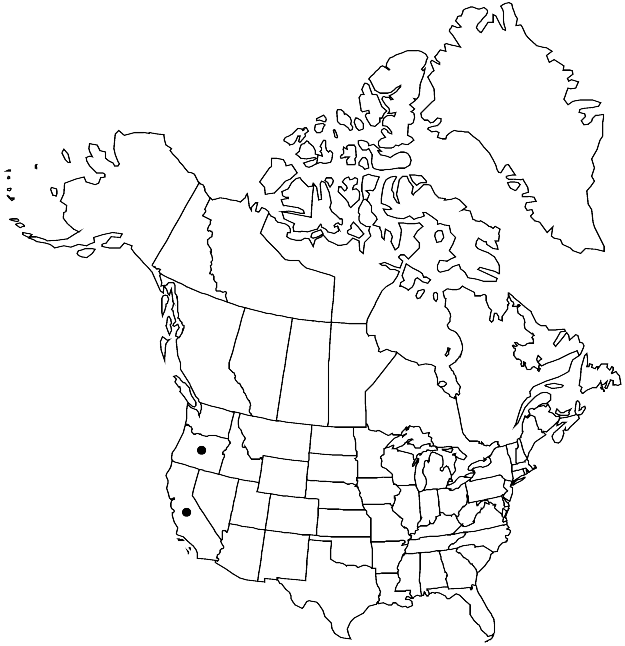Brachythecium bolanderi
Ber. Thätigk. St. Gallischen Naturwiss. Ges. 1876 – 1877: 324. 1878.
Plants small, in loose to moderately dense mats, yellow-green to brownish or dark green. Stems to 4 cm, creeping, terete-foliate, irregularly pinnate, branches to 5 mm, straight, terete-foliate. Stem-leaves erect-spreading, loosely imbricate to distant, ovate to ovatelanceolate, broadest at 1/10–1/6 leaf length, slightly concave, not or slightly plicate, 0.6–1.4 × 0.4–0.6 mm; base rounded, narrowly short-decurrent; margins plane or rarely recurved in places, serrulate throughout; apex gradually tapered or short-acuminate; costa to 60–75% leaf length, strong, terminal spine present; alar cells quadrate to short-rectangular, same size as or smaller than adjacent basal-cells, 10–15 × 10–12 µm, walls moderately thick, region inconspicuous, of 2–5 × 2–4 cells; laminal cells linear, 25–60 × 5–8 µm; basal-cells weakly differentiated, inconspicuous, 25–40 × 9–12 µm, region in 1 or 2 rows. Branch leaves more elliptic, 0.7–0.8 × 0.2–0.4 mm; costal terminal spine with several distal teeth. Sexual condition dioicous. Seta redbrown, 1–2.5 cm, rough. Capsule horizontal, redbrown, ovate-ventricose, curved, 1–1.6 mm; annulus separating by fragments; operculum long-conic. Spores 9–12 µm.
Habitat: Soil
Elevation: moderate elevations (400-1500 m)
Discussion
Brachythecium bolanderi occurs mainly in California; E. Lawton (1971) reported it from Oregon. Superficially, B. bolanderi resembles small and short-leaved phenotypes of Brachytheciastrum velutinum and Brachytheciastrum fendleri; it differs from the former in its shorter leaves and shorter cells (6–8:1 versus 8–12:1), and from the latter in having erect-spreading and loosely imbricate to distantly arranged leaves rather than erect-appressed and closely imbricate leaves. Small plants of Oxyrrhynchium hians may also be similar, but the branch leaves of O. hians are broader.
Selected References
None.
Lower Taxa
"long" is not a number."broad" is not a number.
